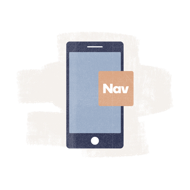Advertiser & Editorial Disclosure
How to Value a Small Business
While you may be pleased by the results, your business’ value isn’t a vanity metric. A proper small business valuation can be important if you’re planning on selling your business, merging, buying out other owners, applying for a business loan, offering employees equity, or going through a major life event.
However, there are different ways to value a small business, and the appropriate method can depend on the size of the business and purpose of the valuation. Understanding the common methods and why the outcomes will differ can be important for small business owners or corporate executives alike.
Methods for Small Business Valuation
There are several methods for valuing a small business based on its balance sheet, earnings, projections about the future, and recent sales of similar businesses. Each method has its pros and cons, and can be used in different circumstances. Here’s a quick look at five popular valuation methods:
Adjusted Net Asset Method
An asset-based valuation can be fairly straightforward if your balance sheet is in order, as it largely mirrors what the balance sheet shows. First, add up the value of the business assets and subtract its liabilities to get the starting value.
Then, to get a more realistic valuation, you may want to put more thought into the numbers. The adjusted net asset method requires you to use your knowledge of the business and currents markets to adjust the value of the assets and liabilities.
For example, you may have accounts receivable that are assets on your books but you know you won’t likely collect the full amount. You should adjust your assets down to reflect real-world values.
The adjusted net asset method can be useful if you’re valuing a company that doesn’t have a lot of earnings or is losing money. It’s also a common valuation method for holding companies that own parts of other companies or real estate investments. If you’re considering selling your business, you may also want to perform this valuation to set a floor price.
Find an Accountant with 1-800Accountant
Capitalization of Cash Flow Method
The capitalization of cash flow (CCF) method is the simpler of the two main income-based methods that you may want to consider when valuing companies that generate income.
To calculate the business’s value using the CCF method, you’ll divide the cash flow from a specific period by a capitalization rate. You’ll want to use one period’s worth of sustainable and recurring cash flow from the business, and may need to make adjustments if there were recent one-time expenses or income events that you don’t want to include in the results.
The capitalization rate (cap rate) is the business’s expected rate of return. This is the rate of return a buyer could expect to earn (not included their salary) if they purchase the business. It’s often around 20% to 25% for small businesses.
The simplicity of the CCF method can also impact its predictiveness. However, the CCF method can be a worthwhile valuation method if you’re looking at a mature and stable company that’s unlikely to see big swings in its cash flow.
Discounted Cash Flow Method
The discounted cash flow (DCF) method is another income-based method. It uses the business’s projected future cash flow and the time value of money to determine the current value. While the CCF is best used with companies that have steady cash flows, the DCF is best for companies that are expected to significantly grow or shrink in the coming years.
The time value of money is the idea that money is worth more today than it is in the future. For example, if you have a thousand dollars today, you can invest the money, earn interest, and have more than a thousand dollars in five years. A discounted cash flow model takes this into account, which is why it can be also helpful if you’re trying to compare different investment opportunities.
While the calculations can be a little complex, you can fortunately find online valuation calculators that can help. But you’ll still need to figure out which numbers to plug into the calculator.
The business’s cash flow statement is a good place to start, and projected cash flows if they’ve already been created. Additionally, you’ll need to know the discount rate, or weighted average cost of capital (WACC), which can require more complicated calculations. Think of the WACC as the rate the business needs to pay to finance its working capital and long-term debts.
You’ll also need to decide how many years’ worth of cash flows you want to include. You could base your answer on how confident you are about the future cash flow projections, and use the same number of years if you’re trying to compare DCFs for multiple investments.
Market-Based Valuation Method
A market-based valuation depends less on the specific business than the current market conditions. With the market-based valuation method, the business’s current value is determined by comparing the recent sale prices of similar companies.
Finding relevant comps can be difficult if you have a small business, but you may still want to look for at least a few comps if you’re planning on buying or selling a business. If you’re hiring an appraiser, they may also have access to databases with relevant findings.
Even if the comps aren’t physically located nearby, an appraiser may find similar sized businesses in the same industry and can then make adjustments based on the area. You can also use the results in combination with the other valuation methods to determine a business’s value.
Seller’s Discretionary Earnings Method
The previous four valuation methods can be used for small business and large, publicly traded companies alike. However, the seller’s discretionary earnings (SDE) method is solely used for small business valuation.
If you’re planning on selling or buying a small business, the SDE method might be best because it can help the buyer understand how much income they can expect to earn each year from the business. To calculate the SDE, you’ll need to determine how much cash it takes to run the business.
You can start with the business’s earnings before interest and taxes (EBIT), which you can determine from the financial statements. Then, add back the owner’s compensation (because the new owner can choose a different salary) and benefits, such as health insurance. Also, add back in non-essential, non-recurring, and non-related business expenses. These could include travel, one-time consulting fees, and business use of a personal vehicle.
Because the SDE is often used when a small business is sold, it’s not uncommon for there to be debates about some of the numbers. These can especially arise around the expenses that get added back to determine the value.
As an example, the seller might want to call a search engine optimization project a one-time expense and add that portion back into the earnings to increase the valuation. However, the buyer might consider this to be an ongoing project that needs to be revisited and paid for each year. They’ll need to come to an agreement before a sale can move forward.
Reasons to Value Your Business
- You want to sell your business
- You’re trying to attract investors
- You’re buying out the other owners
- You’re offering employees equity
- You’re applying for a loan or line of credit
- You want to better understand your business’s growth
- You need values for tax-planning purposes
The list can go on as small business owners’ personal and professional lives revolve around their business and its potential. While many of the reasons above involve changes in the business or its ownership, a personal event (such as a marriage or divorce) may also spur the valuation.
How to Prepare for a Business Valuation
If you’re conducting a business valuation for informal purposes, you may want to do it on your own. However, hiring a professional appraiser (you can find one that’s part of the American Society of Appraisers) or business valuation expert (banks, lenders, and accountants may offer the service) could be a good idea if you need the analysis for more serious matters.
In either case, there are a few steps you can take to prepare for the valuation:
Get Your Financial Documents in Order
Every valuation is going to be based, at least in part, on your business’s finances. Even the market-based valuation method requires your business’s financial information to find suitable comps.
At a minimum, you’ll want the previous three to five years’ worth of your business tax returns and financial statements, including the balance sheet, income statement, and cash flow statement. Comb over these statements to make sure everything is accurate and up to date.
Other finance-related documents, such as sales reports and industry forecasts can also be important, particularly for DCF and market-based valuations.
Organize Other Essential Documents
Depending on your reason for the business evaluation, you may also want to have copies of your business licenses, permits, deeds, and certifications available, along with any ongoing contracts with insurers, creditors, vendors, and clients.
If you’re planning on selling the business or looking for business loans for your small business, you’ll likely need to share these along with your financials. You can also pull up your business credit reports and get your free business credit scores from Nav to share with creditors and potential buyers.
List Additional Intangible Assets
Your business’s tangible assets (such as cash, property, and equipment) should be listed on your balance sheet. Some intangible assets may be listed there as well, such as copyrights or patents. But think about other intangible assets that may be providing value.
An extensive email list, loyalty club, good rankings in search engine results, engaged social media profiles, and positive online reviews can all help you attract and retain customers. These types of assets could help improve your business’s valuation even if they don’t have a value on its balance sheet.
Improving Your Small Business Valuation
Your business’s valuation is going to depend on how much money it makes and increasing revenue and cutting costs are the core essentials to improving your valuation. However, you’ll need to decide where you want to focus your energy.
Hiring a professional appraiser or evaluator might actually be a good first step, as they can give you the current valuation and help you identify your business’s strengths and weaknesses. They may even be able to offer suggestions for improvement based on what they’ve seen work for other businesses.
There are also ways to demonstrate the business’s value to potential buyers that don’t rely on the numbers. For example, if you can show how processes and systems are in place that will keep the business running smoothly after you leave, buyers may be more willing to agree to a higher valuation.
Or, perhaps you can highlight how your employees are happy and take ownership of their work. Low turnover can save the business money, and responsible employees can make the transition to new management easier.
Make a Practice of Regularly Valuing Your Small Business
Learning how to estimate the value of a company can be important for small business owners for many reasons. Even if you’re not planning on selling your business or applying for financing, regularly performing a quick-and-dirty business valuation can help you track your progress over time. Taking a deeper dive into the valuation may help you uncover opportunities for growth.
This article was originally written on January 31, 2020 and updated on February 10, 2020.




Have at it! We'd love to hear from you and encourage a lively discussion among our users. Please help us keep our site clean and protect yourself. Refrain from posting overtly promotional content, and avoid disclosing personal information such as bank account or phone numbers.
Reviews Disclosure: The responses below are not provided or commissioned by the credit card, financing and service companies that appear on this site. Responses have not been reviewed, approved or otherwise endorsed by the credit card, financing and service companies and it is not their responsibility to ensure all posts and/or questions are answered.